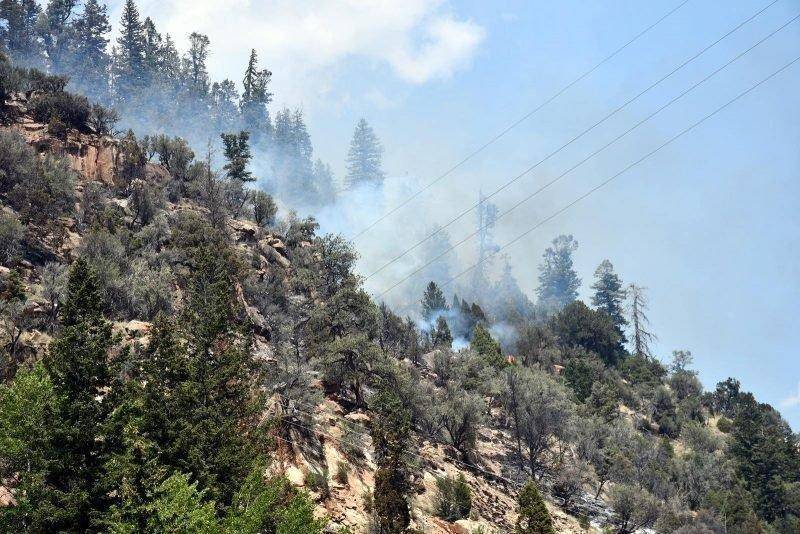Photo courtesy of the Emery County Sheriff’s Office.
Forest Service Press Release
Multiple agencies are now planning and working together to address threats posed by the aftermath of fire in the Trail Mountain burned area.
Recognizing the destructive force of post-fire events like flooding and debris flows, the Forest Service, Natural Resources Conservation Service, State of Utah, BLM, Emery County and private industry are beginning work to stabilize drainages where work can be done.
The watershed stabilization work they are planning and implementing typically begins before the fire is out and may continue for up to a year. They are currently working on catchments and other drainage structures in burned-over areas.
A Burned Area Emergency Response (BAER) team is being established by the Manti La Sal National Forest to begin its burned area survey of the Trail Mountain fire. The objective of the BAER program is to determine the need for, and to prescribe and implement emergency treatments on Federal lands to minimize threats to life or property resulting from the effects of a fire or to stabilize and prevent unacceptable degradation to natural and cultural resources.
“After a fire, the first priority is emergency stabilization in order to prevent further damage to life, property or natural resources,” explained Jeff Bruggink, BAER Program Manager for the Intermountain Region of the Forest Service.
BAER team surveys are rapid assessments of the burned area that evaluate the burned watersheds and determine the potential for increased post-fire flooding, sediment flows, and rock slides that may pose an unacceptable risk to critical resource values.
BAER teams consist of scientists and specialists from federal and state agencies who work together to present findings along with recommended BAER treatments to the Forest Supervisor.
BAER reports are also shared with interagency cooperators who work with downstream private home and land owners to prepare for potential post-fire flooding and sediment flow impacts.

